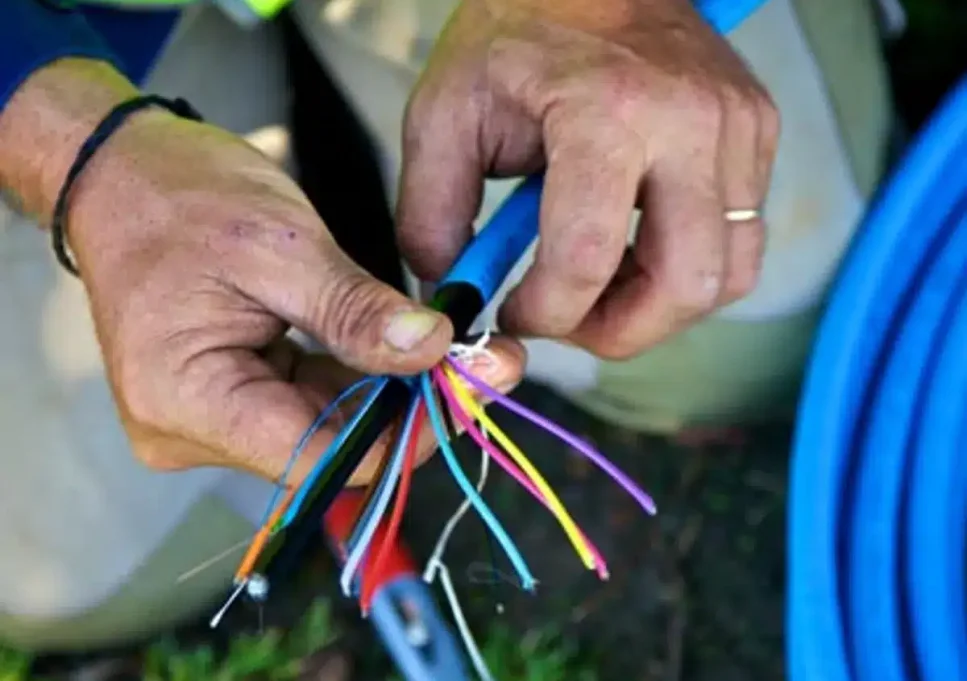On this page:
If you’ve ever wondered, ‘What are fibre optics?’ You’re not alone. In the age of high-speed internet and rapid data transmission, understanding fibre optic cables is essential. This technology is at the heart of modern communication, providing rapid data transmission across the globe. In this blog post, we’ll dive into fibre optics and uncover how they have revolutionised our ability to communicate and connect.
Understanding Fibre Optic Technology
Fibre optic technology has revolutionised modern communication systems, transforming data transmission. Unlike traditional copper wires, which rely on electrical signals, fibre optic cables use light to transmit information. This advancement has resulted in faster and more reliable internet connections that handle the increasing demand for fibre optic internet.
Technicians play a crucial role in setting up and maintaining these advanced systems. Their expertise ensures that the installation is carried out with precision. They are also responsible for troubleshooting any issues that may arise and ensuring that your connection remains stable and efficient.
How Fibre Optic Cables Work
Understanding the basics of fibre optic technology can seem daunting, but here’s a simplified explanation:
- Core and Cladding: Fibre optic cables consist of a core (which carries the light signals) and cladding (which reflects the light back into the core).
- Light Transmission: Data is transmitted as light signals through the core. This is achieved using lasers or LEDs.
- Total Internal Reflection: The light signals bounce off the cladding due to a phenomenon called total internal reflection, allowing them to travel long distances without losing strength.
- Signal Conversion: At the receiving end, the light signals are converted back into electrical signals for devices to process.
Advantages of Fibre Optics Over Copper Cables
Speed and Bandwidth
Fibre optic cables provide significantly greater bandwidth than copper cables, allowing for faster data transmission, which is essential in an era where digital communication is king.
Resistance to Electromagnetic Interference
Fibre optics are immune to electromagnetic interference, unlike copper cables, making them ideal in industrial environments where electronic noise is prevalent.
Durability and Safety
Fibre optics are more resistant to weather conditions and temperature fluctuations and do not carry electric currents, reducing the risk of fire hazards.
Fibre Optic Installation Process
Installing fibre optic cables requires a high level of precision and expertise. Here’s an overview of the typical steps involved:
- Site Survey: Assessing the installation site to determine the best routing for the cables.
- Cable Routing: Planning and laying out the cable paths, considering factors like distance and potential obstacles.
- Cable Splicing: Joining fibre optic cables using specialised equipment to ensure minimal signal loss.
- Testing and Verification: Optical time-domain reflectometers (OTDR) and other testing equipment are used to verify the integrity and performance of the installed cables.
- Final Installation: Securing the cables in place and connecting them to network devices.
Maintaining and Repairing Fibre Optic Networks
Regular maintenance and prompt repairs are crucial for keeping fibre optic networks running smoothly. Here are some key aspects:
- Regular Check-Ups: Periodic inspections to identify potential issues before they become major problems.
- Diagnostics: Using specialised equipment to diagnose signal loss or other performance issues.
- Repairs: Addressing physical damage to cables, such as cuts or breaks, by performing precise splicing and replacing damaged sections.
- Preventative Measures: Implementing strategies to prevent future issues, such as proper cable management and environmental controls.
Connect with Our Technicians Today
At Elite Fibre Optics, we deal in photon-fast data transmission. We offer end-to-end fibre optic cabling services to private, commercial and civil clients from the Gold Coast to the Sunshine Coast and everywhere in between. Get in touch via our contact page or give us a call to a service. Let us help you experience the full potential of fibre optic technology.
